Siyun Wang
Graph Neural Machine: A New Model for Learning with Tabular Data
Feb 05, 2024



Abstract:In recent years, there has been a growing interest in mapping data from different domains to graph structures. Among others, neural network models such as the multi-layer perceptron (MLP) can be modeled as graphs. In fact, MLPs can be represented as directed acyclic graphs. Graph neural networks (GNNs) have recently become the standard tool for performing machine learning tasks on graphs. In this work, we show that an MLP is equivalent to an asynchronous message passing GNN model which operates on the MLP's graph representation. We then propose a new machine learning model for tabular data, the so-called Graph Neural Machine (GNM), which replaces the MLP's directed acyclic graph with a nearly complete graph and which employs a synchronous message passing scheme. We show that a single GNM model can simulate multiple MLP models. We evaluate the proposed model in several classification and regression datasets. In most cases, the GNM model outperforms the MLP architecture.
Decoupled Pyramid Correlation Network for Liver Tumor Segmentation from CT images
May 26, 2022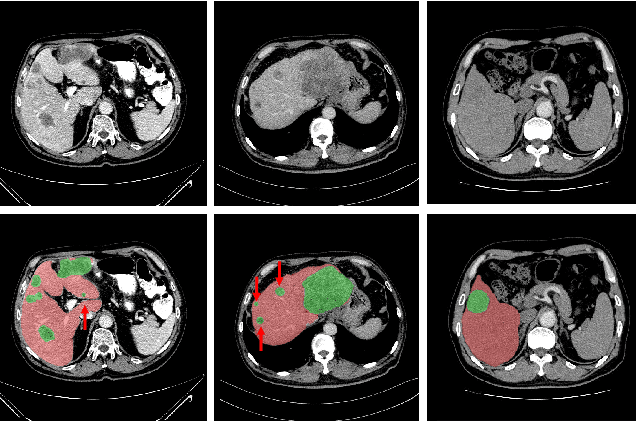
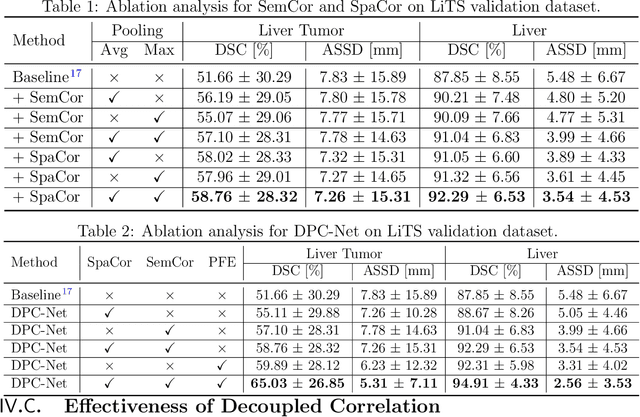
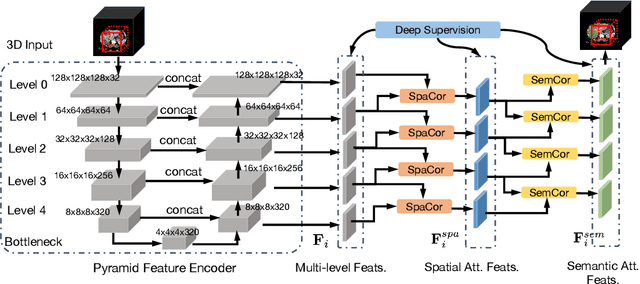
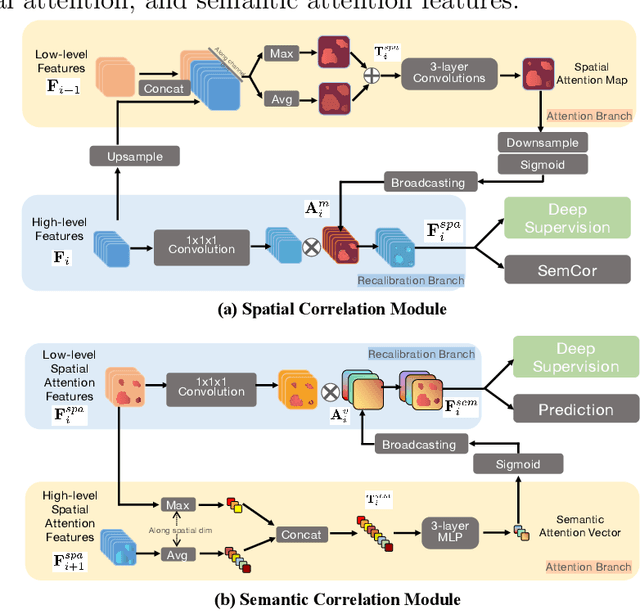
Abstract:Purpose: Automated liver tumor segmentation from Computed Tomography (CT) images is a necessary prerequisite in the interventions of hepatic abnormalities and surgery planning. However, accurate liver tumor segmentation remains challenging due to the large variability of tumor sizes and inhomogeneous texture. Recent advances based on Fully Convolutional Network (FCN) for medical image segmentation drew on the success of learning discriminative pyramid features. In this paper, we propose a Decoupled Pyramid Correlation Network (DPC-Net) that exploits attention mechanisms to fully leverage both low- and high-level features embedded in FCN to segment liver tumor. Methods: We first design a powerful Pyramid Feature Encoder (PFE) to extract multi-level features from input images. Then we decouple the characteristics of features concerning spatial dimension (i.e., height, width, depth) and semantic dimension (i.e., channel). On top of that, we present two types of attention modules, Spatial Correlation (SpaCor) and Semantic Correlation (SemCor) modules, to recursively measure the correlation of multi-level features. The former selectively emphasizes global semantic information in low-level features with the guidance of high-level ones. The latter adaptively enhance spatial details in high-level features with the guidance of low-level ones. Results: We evaluate the DPC-Net on MICCAI 2017 LiTS Liver Tumor Segmentation (LiTS) challenge dataset. Dice Similarity Coefficient (DSC) and Average Symmetric Surface Distance (ASSD) are employed for evaluation. The proposed method obtains a DSC of 76.4% and an ASSD of 0.838 mm for liver tumor segmentation, outperforming the state-of-the-art methods. It also achieves a competitive results with a DSC of 96.0% and an ASSD of 1.636 mm for liver segmentation.
COSPLAY: Concept Set Guided Personalized Dialogue Generation Across Both Party Personas
May 15, 2022



Abstract:Maintaining a consistent persona is essential for building a human-like conversational model. However, the lack of attention to the partner makes the model more egocentric: they tend to show their persona by all means such as twisting the topic stiffly, pulling the conversation to their own interests regardless, and rambling their persona with little curiosity to the partner. In this work, we propose COSPLAY(COncept Set guided PersonaLized dialogue generation Across both partY personas) that considers both parties as a "team": expressing self-persona while keeping curiosity toward the partner, leading responses around mutual personas, and finding the common ground. Specifically, we first represent self-persona, partner persona and mutual dialogue all in the concept sets. Then, we propose the Concept Set framework with a suite of knowledge-enhanced operations to process them such as set algebras, set expansion, and set distance. Based on these operations as medium, we train the model by utilizing 1) concepts of both party personas, 2) concept relationship between them, and 3) their relationship to the future dialogue. Extensive experiments on a large public dataset, Persona-Chat, demonstrate that our model outperforms state-of-the-art baselines for generating less egocentric, more human-like, and higher quality responses in both automatic and human evaluations.
Identifying Mild Traumatic Brain Injury Patients From MR Images Using Bag of Visual Words
Feb 14, 2018
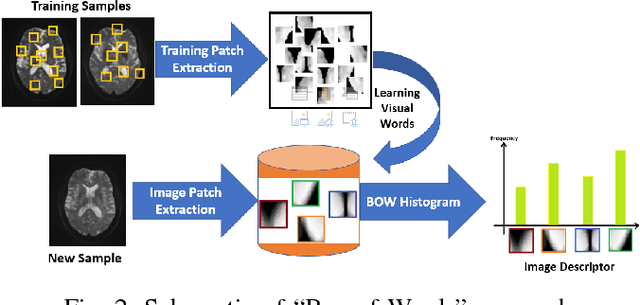
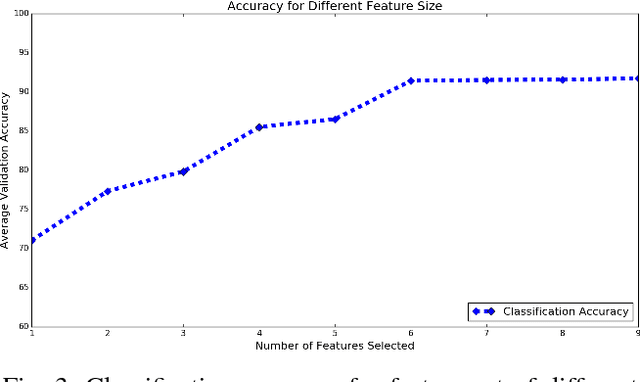
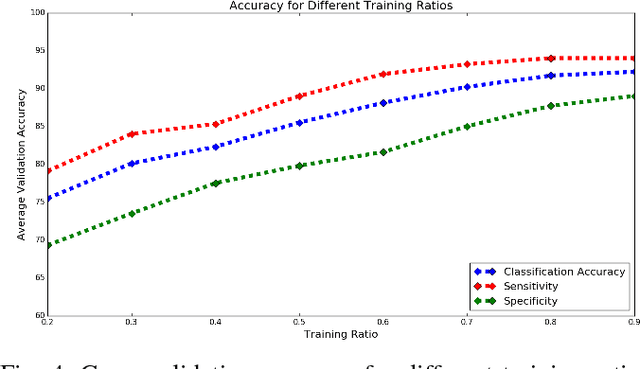
Abstract:Mild traumatic brain injury (mTBI) is a growing public health problem with an estimated incidence of one million people annually in US. Neurocognitive tests are used to both assess the patient condition and to monitor the patient progress. This work aims to directly use MR images taken shortly after injury to detect whether a patient suffers from mTBI, by incorporating machine learning and computer vision techniques to learn features suitable discriminating between mTBI and normal patients. We focus on 3 regions in brain, and extract multiple patches from them, and use bag-of-visual-word technique to represent each subject as a histogram of representative patterns derived from patches from all training subjects. After extracting the features, we use greedy forward feature selection, to choose a subset of features which achieves highest accuracy. We show through experimental studies that BoW features perform better than the simple mean value features which were used previously.
 Add to Chrome
Add to Chrome Add to Firefox
Add to Firefox Add to Edge
Add to Edge